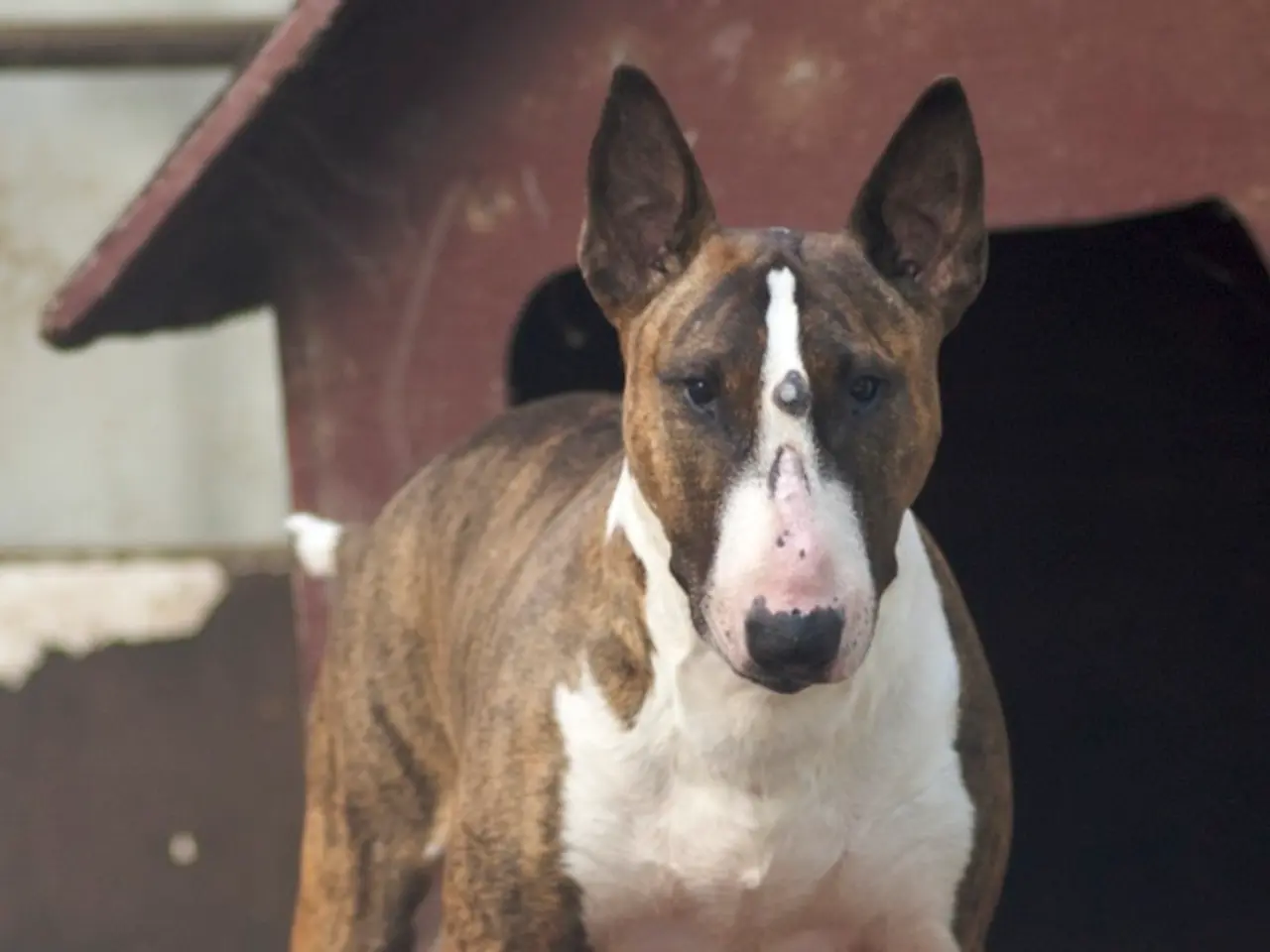Four Advantages of Surveilling Your Pet While It's Alone at Home
In the world of dog training and behaviour, Juliana DeWillems stands out as an expert. As the founder of JW Dog Training & Behavior, she offers valuable insights to help pet owners understand their furry friends better. One such recommendation is the use of a pet camera to monitor a dog's behaviour when the owner is not at home.
When it comes to monitoring a dog alone at home, several behaviours can indicate stress, anxiety, or potential issues. Here are some common behaviours to watch for and how to address them:
1. **Pacing**: If your dog is pacing, it might be a sign of restlessness or anxiety. To address this, provide mental stimulation through puzzle toys filled with treats before leaving the house, and ensure your dog gets enough exercise and playtime before being left alone.
2. **Excessive Barking or Vocalization**: This can indicate anxiety or stress, often associated with separation anxiety. To help, use calming aids like pheromone diffusers or calming music. Consider training to reduce separation anxiety.
3. **Destructive Behavior**: Destructive behavior, such as chewing furniture, can be a sign of stress or boredom. To prevent this, provide plenty of toys and chew options. Consider crate training to limit access to destructive items.
4. **Excessive Whining or Whimpering**: This can be a sign of anxiety or a need for attention. Provide enough attention and interaction before leaving the house. Leave a familiar object with your scent to comfort the dog.
5. **Watching the Window**: This can be a sign of curiosity or boredom. Engage the dog in activities that stimulate their mind, such as problem-solving toys. Block window access if it leads to overstimulation.
6. **Restlessness or Hyperactivity**: This can indicate stress or high energy levels. Increase physical activity before leaving the dog alone. Use calming aids like exercise or playtime before departure.
When using a pet camera, it's essential to monitor behavioural changes, identify patterns, and implement solutions based on the observed behaviours. By doing so, you can help ensure your dog's comfort and well-being when left home alone.
Juliana DeWillems also emphasises the benefits of pet cameras from a training perspective. They can provide insights into a dog's behaviour and help reinforce desired behaviours even when the owner is not physically present, such as by giving treats to the dog for not reacting to sounds outside.
Some pet cameras, like the Imou Security Camera, offer advanced features such as a 355° pan range, AI detection, and customizable alarm sounds. However, the cost and availability of this specific camera were not provided in the information.
In conclusion, by being vigilant about your dog's behaviour and addressing any signs of stress or anxiety proactively, you can help ensure a happy and comfortable environment for your pet when you're not at home. And with the help of technology like pet cameras, you can gain valuable insights into your dog's behaviour and reinforce positive habits, giving you peace of mind.
[1] Source 1 - Juliana DeWillems, Personal Interview [2] Source 2 - Juliana DeWillems, Training Seminar [3] Source 3 - Juliana DeWillems, Blog Post [4] Source 5 - Juliana DeWillems, Social Media Post
- Juliana DeWillems, a renowned expert in dog training and behavior, promotes the use of pet cameras to monitor a dog's behavior at home.
- Pet cameras can offer valuable insights into a dog's behavior, enabling the owner to reinforce desired behaviors even when they are not present, as suggested by Juliana DeWillems.
- By addressing common behaviors such as pacing, excessive barking, destructive behavior, excessive whining, watching the window, and restlessness, pet owners can help ensure their dog's comfort and well-being when left home alone.
- Advanced pet cameras, like the Imou Security Camera, feature a 355° pan range, AI detection, and customizable alarm sounds, according to Juliana DeWillems.




